Diamond and brilliant: what's the difference?

For a long time, precious stones were in great demand both among the rich and wealthy people, and among the common population. Such stones have always symbolized prosperity and success, moreover, they always attract attention to their owners. However, for many, the question remains unresolved, what is the difference between a diamond and a diamond. In the article, we will take a closer look at the characteristics of both stones, find out their significant differences and nuances of assessment.
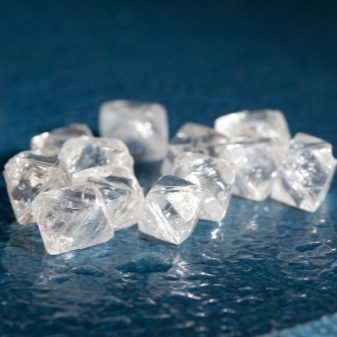
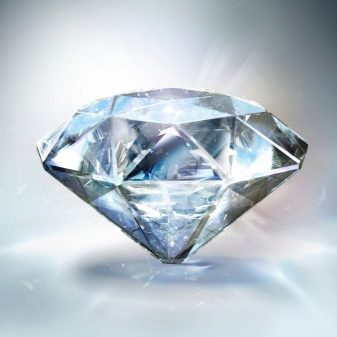
Main characteristics
To understand what are the differences between the two stones, let's take a closer look at their characteristics and properties.
Diamond
Diamond is a hard mineral (crystalline carbon) that forms under the influence of high temperatures and high pressure. Refers to precious stones. Due to the special mineral form of carbon, it is diamond that is considered the hardest mineral of all discovered in the world on a special scale of hardness. Diamond is found in special deposits, in addition, in most cases it is grown artificially - in laboratory conditions. Today it is known that about 97-98% of diamonds used in industry are artificially grown.
Natural or natural diamonds, which arose under the influence of special geological processes, do not look very aesthetically pleasing. And few people know that their amazing optical properties are revealed to people only when the correct cut is created.
Outwardly, natural diamonds are very dull and have no shape at all.
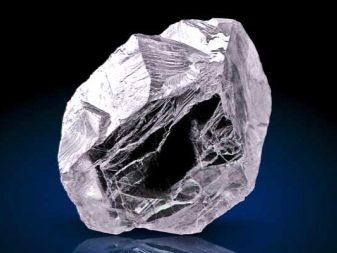

It is known for certain that if a diamond is heated to a very high temperature, it will simply turn into graphite, which will not have the same value as the original mineral.Moreover, if the stone will exist under normal temperature conditions, it will not face such a sharp reincarnation. Diamonds and polished diamonds have no shelf life or service life; they can delight their owners for centuries.
In order for a diamond to truly reveal all its external properties and shine in the light of the sun's rays, professional jewelers have to work hard, giving the stone a shape and exquisite cut. As a result, a cut diamond gets a different name - a diamond.

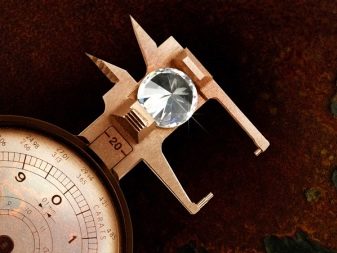
Diamond
A diamond is a perfectly cut natural or synthetic diamond. It has the same hardness and all the same properties as the original stone, only outwardly it is more pleasant to look at it, and its edges play in a more favorable light.
Today, jewelers know many methods of cutting diamonds, as a result of which they are subsequently used in a wide variety of jewelry.


How do they differ?
In fact, the difference is only in the names, because a diamond and a diamond are, in fact, one and the same stone. At the same time, they also have basic differences if we consider the natural uncut and faceted mineral. Let's consider them in more detail.
- Mineral weight. The weight is very important because it can differ before and after cutting. The weight loss in the final cut may be related to the cut itself.
- Price. Rough diamonds cost significantly less than finished diamonds. In general, rough diamonds are not in short supply now; many companies offer them for sale. But here it is worthwhile to understand that you still have to turn to a professional jeweler to cut the stone, and therefore it is worth weighing the pros and cons, whether you will save on it or not. Moreover, diamonds should be purchased only from trusted firms that can show that they have a certificate that they sell genuine minerals.
- The form. Diamonds tend to have very different shapes and symmetries of the mineral itself. Sharp edges, specks and other defects can be observed in diamonds, which are eliminated later when working with a stone. There are diamonds that are unsuitable for cutting due to many defects. The diamond, on the other hand, has a ready-made shape, which was given to it by the master. It is pleasant to look at such stones in various jewelry, for example, bracelets, earrings, watches and other accessories.
- Scope of use. Diamonds that are unsuitable for jewelry and have many defects are commonly used in industry. Such "non-first grade" diamonds are usually used to make diamond coatings for tools, used in laboratory conditions for various tests. Diamonds are mainly used for inlaying any expensive jewelry and accessories.
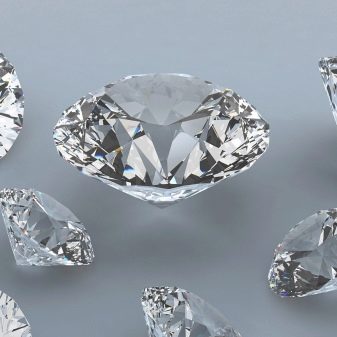

Size, weight and their meaning
The size of diamonds is very often associated with the number of facets that the stone has and its weight. In most cases, stones are processed exclusively by hand, and therefore some of the minerals can be different in size, but at the same time the same in weight. It is known that even large diamonds with only one facet can weigh as much as very small stones... When assessing the size of any stone, a special scale is usually used, which jewelers are guided by. So, the purest diamonds belong to category "A", these stones have an ideal cut, brilliance, weight and size. The attitude to a particular category is mainly determined by jewelers, since it is almost impossible for non-professionals to do this.
Knowing the size of a diamond, you can independently determine its weight, even without having any special tools at hand. The main thing is to measure out or know in advance the height of the stone and its diameter. The ratio of height to diameter (as a percentage) is the weight.
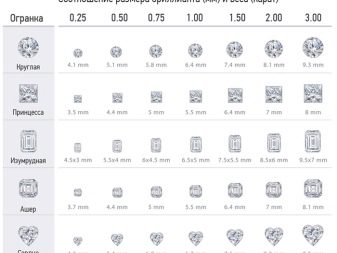
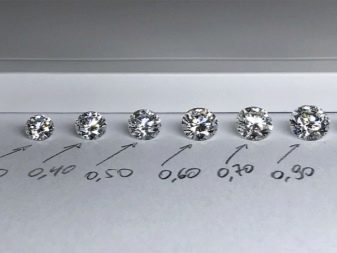
Faceted stones
In the modern world, small diamonds up to one carat are considered especially in demand. Cutting diamonds can be of two types:
- round (the most common and less expensive);
- fancy (when stones are cut in a variety of shapes).
To assess the quality of stones, a special system is used, which necessarily takes into account:
- faceting;
- purity;
- Colour;
- carat weight.
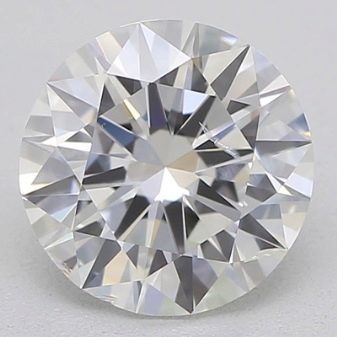
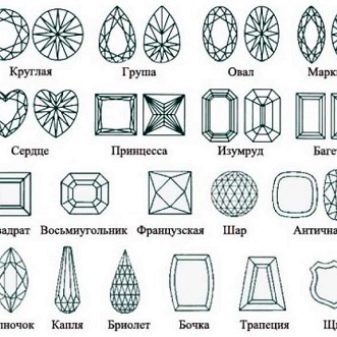
The similarities between the two minerals lie mainly in their origin. It is quite difficult to distinguish natural from artificial stone; this will require a lot of relevant knowledge. Therefore, despite the fact that the purchase of expensive jewelry stones or products with them is an excellent investment, such stones should be purchased only in proven places where it is impossible to stumble upon a fake.
For the price of diamonds it is difficult to compare with other stones, except perhaps emeralds and sometimes rubies. The largest diamonds are the property of many museums around the world, and the most luxurious of them can often be seen in the jewelry of royalty. At the same time, pure diamonds are practically not represented anywhere.
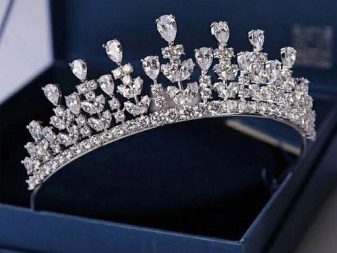

Output
Summing up, we can say that diamond differs from brilliant in several parameters.
- By weight. The weight of the original stone (diamond) may even be several times greater than that of the already cut. But at the same time, diamonds look many times more attractive and better than pale diamonds.
- Shine. Diamonds are colorless and do not reflect light, unlike diamonds.
- At a price.
- The presence of a cutthat only diamonds have.
Diamonds generally have no facets until they are specially processed. They are initially formless. Neither stone is stronger than the other. This property does not change even after working on the mineral. This process is considered to be quite complex, time-consuming and ultimately quite costly. Which in many ways affects the final cost. Colorless stones take shape only after professionals have worked on them.
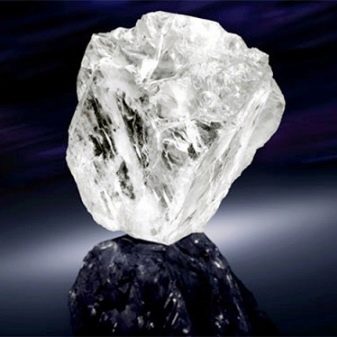
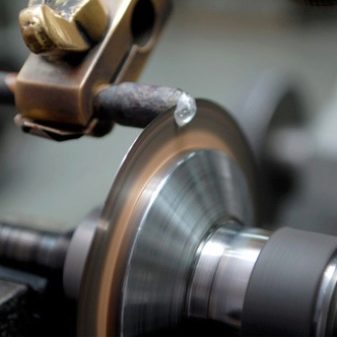
Diamond is the original stone without any brilliance, color or shape. Such stones in their pure form can only be used for scientific purposes, for medical and industrial purposes. Diamonds are several times more expensive than diamonds due to the fact that they are given a special shape by cutting. They are rarely sold in their pure form, mainly in some kind of jewelry with precious metals, due to which they are even more valuable.
And also the main differences between brilliant and diamond can be found in their physical and chemical characteristics. Diamonds are natural, completely untreated nuggets that have long been synthesized without difficulty in artificial conditions.
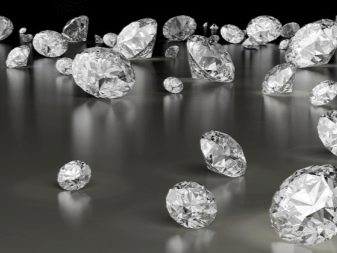

In the next video, you can take a look at the birth of a diamond.








